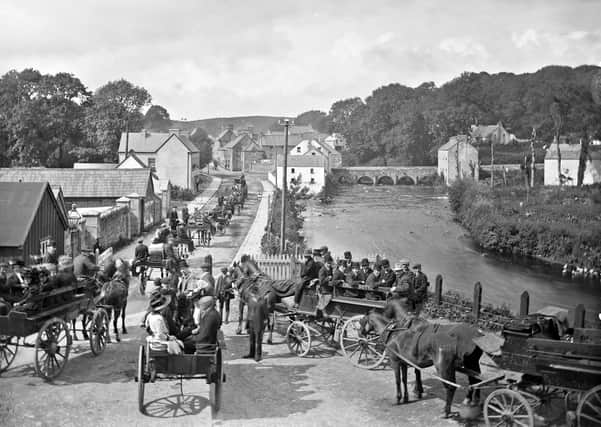Driving out the invaders (June 1922)


Military operations against the Free State and Republican forces in the Belleek sector of Fermanagh began on Saturday, June 3, 1922, and on the day IRA men had defiantly advanced a further mile and half into Northern Ireland territory.
Enniskillen a war base
On Saturday the town Enniskillen resembled a war base, the News Letter’s correspondent in Fermanagh detailed.
Advertisement
Hide AdAdvertisement
Hide AdThey continued: “All day armed forces were arriving, including detachment of the Royal Field Artillery. Later these moved to the invaded area by water and road. One of the first steps taken was the cutting of all communications with the so-called Free State.”
This was done in a thorough manner: “Roads were blocked, the railway services were discontinued, and all telegraph and telephone wires were cut, messages being afterwards sent by motor scouts. Motor lorries and moor boats were commandeered and every use was made of local help.
“The Special Constabulary all day and all night watched the roads.
“The incoming troops got a cheering welcome as they moved quickly up tho north side of Lough Erne.”
Special constable killed by sniper
Advertisement
Hide AdAdvertisement
Hide AdOn the Sunday morning the 24 hours notice to the Sinn Feiners in possession of the Belleek triangle came to an end and Crown forces began to move forward on the IRA and they got “their first taste of real war”.
The miltary started their operations at both ends of the base of the Belleek triangle. One force had taken op position by marching along the north side of Lower Lough Erne; the other was conveyed across by boat.
Early in the morning the Sinn Feiners fired with machine guns along the roads.
When the force operating against the north, or Pettigo, side of the triangle approached the Sinn Fein lines heavy fire was opened them.
Advertisement
Hide AdAdvertisement
Hide AdThe Royal Field Artillery replied with eight shells from a 4.5 gun, and later, when the military advanced, six bodies were found lying at the place. Others had apparently been removed.
There was little further opposition until the first party troops a Crossley car was nearing Pettigo, a Sinn Fein sniper shooting the driver, Special Constable Dobson of Enniskillen. The News Letter noted that: “The constable killed, but as he was struck he stopped the car, so that no other lives were in all probability saved.”
Miltary report
On the Sunday of the operation the following communique was issued last night from the headquarters of the Ulster military district, it told how Sinn Feiners had been driven out of Pettigo.
It detailed: “British troops, moving by water to western end of Lough Erne on the evening of the 3rd inst., were fired at from Free State territory near Pettigo. British troops, moving Ulster territory towards Pettigo village on the morning of the 4th inst. were fired at from Free State territory, and a driver of a Crossley car was killed. In consequence of these occurrences, the armed forces occupying Pettigo village were attacked by British troops, and driven out, three being killed and a Lewis gun captured. Artillery came into action, and fired a few rounds against machine guns firing from a wood behind Pettigo village.”
Comment Guidelines
National World encourages reader discussion on our stories. User feedback, insights and back-and-forth exchanges add a rich layer of context to reporting. Please review our Community Guidelines before commenting.